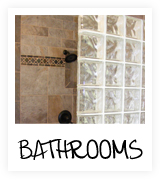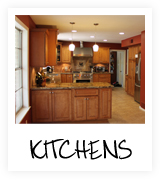As medical science allows us to live longer, many of us have to deal with family members who are handicapped. Currently in the United States, there are roughly 50 million people that have to deal with a handicap of some sort. This week, we are going to look at some changes we can make in order to give our family members some independence. The sooner that you can make changes to impact their quality of life, the better it will be for your family members.
There are some small changes that can be implemented almost immediately to help your home become more accessible to your family members. At the most basic level, clear your paths and walkways. Make sure that the paths and walkways are wide enough to accommodate crutches, walkers, or wheelchairs, typically 36 inches wide. You can prevent tripping and falling by looking for loose rugs, sharp corners, and furniture legs that may stick out into the pathways.
The key is in laying out your home in a way that reinforces your family member’s feeling of independence and their overall feeling of self worth. Place commonly used items on lower levels so they can easily reach them. Check every room in the house in order to rearrange items for easier access
Adding handrails can give support and extra security to your disabled family member. The height will vary depending on the needs of the person. For children, handrails should be at around 24 inches, but in general, they should be at a height of 34-38 inches (most building codes specify this). The diameter of the handrails should be easy to grab and hold, and should be smooth and well finished. The railing must also be firmly attached so your family member can safely use it.
Because the kitchen is often the central gathering place for the family, a kitchen is a good place to make some changes. By making some changes to make your kitchen more accessible, it will not only aid your family member in need, but it will also make the kitchen safer and more accessible for the entire family.
For flooring in the kitchen, due to the fact that most work in done while standing, use a cushioned flooring material such as cork or vinyl in order to reduce leg fatigue for the elderly or people with back or leg pain. Ensure that it also has a non-slip finish to help your family members who use crutches, a walker, or a wheelchair. Neutral colors with a glare free finish will help to reduce eyestrain. Avoiding busy patterns in wall coverings will help to reduce confusion among people with vision problems. Adding lighting under cabinets will also aid those with limited vision. If you add contrasting borders around doorways and the edges of rooms, it will also help mark boundaries for those that are vision impaired. This technique can also be used to mark the edges of counters and islands.
By installing a scald-proof valve on the kitchen faucet, you can protect both the young and elderly from sudden changes in water temperature. By using lever style faucets, which are easy to adjust, it will aid those who have limited hand or wrist strength. By installing a hot water dispenser on the sink, it will make preparing coffee or tea much easier.
Pull out drawers on cabinets will make things more accessible to handicapped family members. Creating an even work surface between the sink and stove will help those with limited arm strength. This will enable them to slide heavy pots, rather than having to lift them. A stove with front mounted controls will allow wheelchair bound family members to be more independent. A tilted mirror over the stove will allow wheelchair users to see into the pots they are cooking.
We hope that this article has given you some ideas into ways to make your home more accessible for your family members who might need more help. A.C.T. Services would be glad to put our 31 years of experience to work in remodeling your home to make your family member feel more independent. As always, you are the most important part of our remodeling team.
Gary Harris





